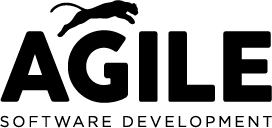🚀 Why Traditional Software Projects Fail — and How Our SaaS Model Solves It

Autor
Josef SauterFor many organizations, especially in Latin America, technology implementation often comes with more frustration than results. At Agile Software Development, we've spoken with dozens of business leaders who share similar stories of big investments that didn't deliver 💸 , processes that got stuck in ERP limitations, and IT departments overwhelmed by complexity.
The good news? 🎉 These pains are not inevitable. They happen because of how traditional software projects are structured. Let's look at the most common frictions — and why our SaaS model helps ease them.
⚠️ The Hidden Risks of Upfront Payments
In a classic software project, clients are asked to pay large sums before they can even see the first results. This approach is risky: if the requirements are misunderstood (and they often are), the final solution doesn't match the real needs.
In Latin America, many businesses have learned this lesson the hard way — paying upfront for a "custom" solution that never quite works. The gap between what was promised and what was delivered creates frustration, tension, and wasted resources.
⏱ IT Bottlenecks and Limited Agility
Even when a solution is delivered, another problem appears: handing over the code to the IT department. Diagnosing and fixing issues requires time, access, and prioritization — and too often, business users are left waiting ⌛.
🏗 When ERPs Aren't Enough
ERPs are powerful, but they aren't designed to handle every unique business process. Trying to force-fit new needs into an ERP can be costly, complex, and sometimes impossible. This is why many employees bypass official systems and turn to Excel, WhatsApp, or shared folders 📂 to "make things work." These improvised pilots may solve the short-term need but quickly collapse under growing complexity.
🤝 A Healthier Customer–Supplier Relationship
Our SaaS model is built on mutual accountability. If our solution doesn't work for you, you don't pay 💰. And if you don't pay, we don't deliver the service. This creates alignment from the start — expectations and outcomes are tied together.
Over time, this model also encourages a user-driven culture within organizations. Employees see their feedback transformed into impactful features, and managers witness a bottom-up evolution in how processes are improved.
🌟 The Bottom Line
Technology should accelerate your business, not slow it down. By shifting from traditional, high-risk projects to a build-and-operate SaaS model , we help organizations reduce risk, gain agility, and create solutions that truly fit their culture and needs.
